Mulching is a great way to improve the health of your garden - and to reduce your work as the gardener.
Unfortunately, there’s no such thing as a truly effortless garden - you’re going to have to do some work in order to get it into fighting shape. However, mulch can dramatically reduce the amount of energy you need to spend each day, week, and season to make your garden look beautiful.If you’re new to mulch, you might have lots of questions. Where should I spread mulch? What types of mulch are there? How thick do I spread it?
We'll tell you everything you need to know about mulch - and then some! - in this helpful guide.
Benefits of Mulch
The benefits of adding mulch to the garden are bountiful. Not only does mulch help the ground retain moisture so you don’t have to water as often, but it also prevents the roots of plants from becoming too waterlogged. Mulch can also protect the soil from hot, pervasive sunlight. Learn what type of crops are the highest yield to make the most of your garden.
On the flip side, there are certain types of mulch that actually help to absorb sunlight - like black plastic. This is a great option for gardeners in cold climates who want to get a jump start on planting in the spring. Mulch can also be used to protect fragile plant roots from harsh winter weather.Another benefit of mulch is that it helps to prevent weeds. When you add mulch to your gardening beds, it blocks light from penetrating through the soil. Less light means fewer weeds can germinate.
Mulch also just makes your garden look nice! It adds both texture and color, which can really improve the aesthetics of your landscaping.Finally, mulch that is made out of organic materials can help improve the quality of your soil. Over time, mulch breaks down and can improve the fertility and structure of the soil. This is particularly true of compost, which includes tons of beneficial microbes that can enhance your soil quality.
Best Time to Mulch
You can mulch at virtually any time of the year, but the best time to do so is first thing in the spring. If you mulched the year before, you’ll want to check on the mulched areas of the garden and touch up your beds to fill in any bald or low spots.
You should also mulch late in the fall. You may need to reapply to protect the soil from winter weather, as a good layer of mulch can regulate soil temperature. After the ground has frozen a couple of times, you can add a few layers of mulch as a protective barrier.Types of Mulch to Use in Your Garden
Straw/Hay
Both straw and hay have lovely golden colors that really pop in the garden. This kind of mulch is often used for vegetable gardens, as it decomposes pretty slowly and keeps weeds down around plants.It does a good job of keeping dirt off your edible plants, but it’s important to make sure you use straw that’s free from weed seeds. This can cause additional weeds to appear. Oat straw tends to be the weediest of all straw types, so just keep this in mind.
Shredded Bark
Shredded bark is one of the most frequently used types of mulch for ornamental gardens, although it can also be used in settings like vegetable gardens. One of the cheapest types of mulch, it can come from all kinds of trees. Cedar is one of the most common tree types used for this kind of mulch.This kind of mulch is popular because it breaks down slowly. You won’t have to reapply it very often. It is often used on sloped land because it doesn’t erode easily, either. There are all kinds of shredded bark options you can choose from, many of which are eco-friendly.
Landscaping Fabric
Landscaping fabric is a good choice for long-term use in the garden. It helps to suppress weeds but still lets water and air pass through. It is quite expensive, however, and is best used with a layer of organic mulch on top. This will improve its appearance and also keep it weighted down.Compost
You’ll need a lot of compost to suppress weeds, but it can be a good option if your main mulching goal is to increase soil fertility. Because it’s so dark, it will provide a nice contrast to your plants. It breaks down fast but will also improve your soil quality the fastest, too - so you need to consider which aspect matters most to you.Another benefit of compost as mulch is that it is one of the few mulch types you can make for free. There are also lots of municipalities that will give away free compost, too, so make sure you check in to see what’s available in your local area. No composting area in your garden yet? No problem learn how to make your own compost bins and start right away.
You can also use plain composted manure. This kind of compost is nutrient-rich, but you need to be careful about its freshness when you add it. Fresh manure has the potential to burn plant roots if you haven’t allowed it to age long enough. Plus, cat and dog manure can harbor disease, so avoid using these in your garden at all costs. When making your own compost refer to our composting guide on what you can and can't compost.
Bark Nuggets or Chips
Bark chips, or bark nuggets, break down a lot more slowly than shredded bark. However, they tend to move around a bit more. They aren’t ideal for places that are prone to erosion, like slopes or banks, but they look great in level flower beds. You can find nuggets in all shapes and sizes, but keep in mind - the larger the chip, the longer it will last.Cocoa Chips
Cocoa chips, or cocoa bean hulls, are easy to handle and easy to apply to a garden. They can be somewhat expensive, but the plus side of using cocoa chips is that they are appropriate for all planting areas and incredibly lightweight. They decompose quickly, so you’ll have to replace them on a regular basis - and they can be quite pricey. You also need to avoid using cocoa mulch if you have pets since it can be fatal to most animals when consumed.Cardboard or Newspaper
Both newspaper and cardboard can be used as a mulch in the garden. Because these materials are lightweight, they have a tendency to become airborne - so you may want to apply a few layers at a time and then cover them with another heavier mulch to hold them in place.Stones
Perhaps one of the most expensive types of mulch, stones is also some of the nicest looking. They’re also the longest-lasting - they will never break down, so you may spend more money upfront to invest in stone mulch, but you will never have to replace it.You can use all kinds of stone and river rock as mulch. They tend to get hot, making them a good choice for rock gardens and cactus gardens. If you use rock, you may want to cover the ground in landscaping fabric or plastic first to prevent weeds from developing.
Grass Clippings and Shredded Leaves
Grass clippings and shredded leaves don’t always look the fanciest, but the plus side here is that they are free. These kinds of mulch are best used around shrubs and trees or even in vegetable beds.You’ll want to avoid applying in thick layers, as it can cause the material to mat. You should also avoid applying grass clippings from lawns that have been treated with chemicals, like insecticides and herbicides.
One easy way to use grass clippings as mulch is to leave them right on your lawn after you have mowed. They’ll provide nutrients back to the growing grass and you won’t have to do anything at all.
If you plan on using grass in any other location in your garden, let it sun-dry for a couple of days. This can help kill weeds and prevent grass from growing in places you don’t want it to. And if you’re using leaves, let them age for at least nine months so that growth-inhibiting phenols can leach out.
Rock or Crusher Dust
These inorganic mulches look great in your garden, especially if you’re using them around perennial plants and don’t want to have to re mulch often. They don’t break down, so they’ll help you save on the costs of labor - you will never have to reapply them. However, they can be a bit pricier upfront. You might want to consider options like marble chips, crushed gravel, lava rock, crusher dust, or pea gravel.Just avoid using rock material of any kind around trees and shrubs. They don’t retain moisture as well and can cause heat stress to your plants.
Plastic
Landscaping plastic is a great choice for vegetable plants, especially if you live in a cold climate. Its only downside is that it doesn't break down, nor does it allow water and nutrients to pass through the soil. It’s best used as a temporary mulch in the garden around heat-loving plants, like peppers and tomatoes.If you use plastic mulch, make sure you have a good irrigation system in place to provide your plants with the water they need.
Rubber
Rubber is most commonly used as a mulch in commercial or high-traffic areas since it can be a bit expensive. It is incredibly durable and does not break down. Lots of people like it because it is made out of recycled tires, so it can be eco-friendly in that regard. However, you shouldn't use rubber mulch around your edible plants, as it can leach toxins into the soil over time.
Choosing the Right Type of Mulch
When you’re trying to find the right kind of mulch for your garden, it’s important that you take a few factors into consideration. For example, how often do you want to apply mulch? Do price and availability matter? Do you care what it looks like? And most importantly, what kind of plants are you growing?
Once you know the answers to these questions, you may want to consider these guiding themes to help you pick the right type of mulch.
Organic vs. Inorganic
As a gardener, you will be able to choose from two types of mulch - organic and inorganic.
Anything that will break down and decompose over time can be considered organic. You might consider grass clippings, hardwood or softwood chips, evergreen needles, bark, compost, or even cardboard and newspaper.The benefit of organic mulch is that it will break down and improve the quality of your soil. Whether it’s improved fertility, more structure, or better drainage that you are shooting for, organic mulch will be the best at getting that job done for you.
If you don’t want to have to replenish mulch on a regular basis, organic mulch is not for you. Instead, you’ll want to consider inorganic mulch. Inorganic mulch will include types of materials that do not decompose. You will rarely have to replenish them, if ever. Some options include lava rock, stone, pulverized rubber, plastic, landscaping fabric, and crusher dust.
Inorganic mulch doesn’t have to be replaced, but it can make the soil very hot - so that’s something to keep in mind. Some kinds of inorganic mulch can also be quite pricey.Mulch Color
Most mulch types hold their color well, but that’s not true of all of your options. For example, some organic mulches will become gray in a year or so. This depends on the amount of sunlight that the mulch receives.
If you want a deeper color to accentuate the look of your plants (often important for ornamental gardens or landscaping beds and not so much for vegetable gardens), you may want to buy custom-colored mulch that is processed with vegetable dye. This color will last a couple of years. You might find that bright colors run a bit during heavy precipitation, but it should wash away on its own.The mulches that hold their colors longest include red mulch, gold dyed mulch, and black mulch.
Location
You can use mulch just about everywhere, but you’ll need to consider the location when you’re picking out the best type of mulch for your needs.
For example, an organic mulch that is spread out over a damp, low lying area might hold more moisture than your plants like. This can cause slugs and rot to flourish! Mulches like a rock can become quite hot and will essentially cook the roots of your plants, too.
If you’re trying to figure out the best kind of mulch for your planting location, you may want to chat with a nursery expert who is familiar with the gardening problems and nuances in your specific location.
Plant Type
Without a doubt, the most important factor to consider when you're trying to decide on a mulch type is the type of plant. Not all plants grow well in the same conditions.
You can’t even use the same type of mulch for all vegetables! For example, crops that love heat, like eggplants, tomatoes, squashes, and melons will do with black plastic mulch, especially if you are growing in a cold climate. When you apply this kind of mulch in the early spring, it will raise soil temperatures so you can plant sooner.However, this kind of mulch will not work well for cold-loving plants, like broccoli. You would be better off with a wood chip or straw mulch for these plants so they get plenty of moisture and cool, fresh air. This kind of mulch can lower soil temperature by as much as 25 degrees so your plants continue to produce during the hot summer heat.
When applying mulch around trees and shrubs, you have to be careful about using stone mulch. It can cause the soil to become too hot. Make sure you do some research on which mulch type will be best for the specific type of plant you are growing.
Weather
Consider the climate in your local area, too. If you live in a hot growing zone, high soil temperatures can stress your plants and destroy organic matter - so you will want to avoid soil-warming mulches like plastic and rock. You’ll be better off with a cool mulch like straw or leaves.
Conversely, if you live in an area that experiences cool, wet summers, a moisture-retaining mulch is not a great idea. It can attract slugs and cause your plants to yellow from the moisture.
Soil Type
Consider the soil conditions in your garden before selecting and applying mulch, too. In general, most plants don’t do well when planted in wet, heavy soil. You'll want to avoid using a thick layer of moisture-retentive mulch, as it can further worsen these conditions.On the flip side, you should avoid using plastic mulch on dry, sandy soil, as it can prevent water from getting to the roots of your plants.
Lifespan
Not all muscles are built alike when it comes to their lifespan! As mentioned earlier, inorganic mulches will last the longest in your garden, but the catch-22 is that they won't add anything back to the soil. You’ll end up having to fertilize in order to replenish soil fertility.
Organic mulches won’t last forever, but they can help build your soil. For the greatest longevity, you’ll want to pick an organic mulch that consists of large chunks. It will decompose slowly and add back to the soil as it does so.
How to Mulch Your Garden
How Thick to Apply Mulch
You may think, “the more the merrier!” when it comes to applying mulch in your garden - but believe it or not, there is such a thing as too much mulch.You want to avoid the habit of creating “mulch volcanoes” around the base of your plants. This can lead to problems with rodent and insect infestation and it can also cause fungal growth or root rot. This is because mulch that is too deep can cause too much moisture to build up around the roots of a plant.
Try to limit your mulch application to just two to four inches deep for best results. This will slow weed growth and retain moisture. Make sure you have an area that’s about six inches from woody stems to prevent rot.
This may vary depending on the type of plant you are growing - the more shallowly-rooted the plant is, the less mulch you need. However, if you’re applying mulch on a slope, apply more thickly, as it will help prevent erosion as the mulch will mat together.
Where to Buy Mulch
You can make your own mulch, in many cases - we’ll tell you how later in this article. But if making your own mulch isn’t your idea of a great time, don’t worry - you can also buy it from most home and garden stores.
How Much Mulch Do I Need?
To figure out how much mulch you need, multiply the width and length of your garden bed, and then divide it by three. This will tell you the amount of mulch is needed, in cubic feet, to cover at a depth of four inches.
Sometimes, it can be cheaper to buy mulch by the yard instead of by the bag. If you don’t have a vehicle big enough to get all that mulch home, don’t worry - lots of companies and landscaping services offer inexpensive (sometimes free) delivery if you are buying in bulk.
And how many cubic feet are in a yard of mulch? About 27. Most bags of mulch hold about two cubic feet, although this varies.
How to Lay Mulch
Start by selecting the right time to lay mulch - if you’re applying a cooling mulch, wait until the beginning of summer, when the soil has warmed. If you’re applying a warming mulch, like plastic, you can go ahead and apply it in the early spring.Begin by pulling weeds out of the lawn. Use a spade or shovel to remove existing weeds. Don’t just lay mulch on top of weeds. It will suppress them, but it’s going to have to do more work in the beginning. Plus, it might not lay as flat if there are tall weeds to contend with.
Create an edge for your mulch by using a shovel to dig around the area you want to mulch. That way, you’ll have a smooth, continuous line to workaround. Then you can shovel small piles of mulch onto your lawn, flower bed, or vegetable garden.
The easiest way to do this is to just pour mulch into a wheelbarrow. Shovel small mounds of mulch into the areas you intend to add it. Once you have a few piles in place, you can take it out in an even layer.
After mulching, water it deeply. This will prevent it from blowing away and will add moisture around your plants. Don’t overwater, as this can cause water to pool.
Remember to replace organic mulch every year or every other year. You’ll be able to tell when it’s time to re-mulch by taking a look at your plants. Mulch that needs to be replaced will no longer look fresh. Inorganic mulch won’t need to be reapplied, but if you find it looking dull, you can give it a good wash down with a hose.
Should I Use a Landscaping Fabric Under Mulch?
Some people prefer to use landscaping fabric under their mulch. If you do, make sure it’s a porous landscape fabric to separate it from the soil and to slow weed growth.Landscaping fabric is usually not necessary unless you are applying it under gravel, stones, or other inorganic mulches. In this setting, it’s best used to prevent weeds from rooting in the oil. If you’re mulching with an organic option, skip the landscaping fabric, as you’ll want to give them plenty of room to decompose and mix into the soil.
How to Apply Mulch Around Vegetables
If you already have your vegetable garden planted, there’s a good chance that you already did a good job of removing weeds. If not, though, make sure you take the time to pull weeds around your plants before adding mulch - at least the large weeds, anyway. The small ones will mostly be smothered by the mulch.Spread your mulch around your vegetables by using your hands. You won’t want to dump mulch in piles, as you would in a flower bed or other large area, as this could topple your vegetables. Instead, just use your hands to spread the mulch around the base of the plants. Make sure the mulch doesn’t pile around the stems.
Again, it’s a good idea to water after you have applied the mulch. This will help it stay in place and smother those weeds!
How to Mulch Around Trees
The biggest thing to keep in mind if you are applying mulch around a tree is that you need to avoid making a “mulch volcano.” Mulch volcanoes consist of piles of mulch that get steeper as they approach the base of a tree.There are several problems with mulch volcanoes. First, applying more than six inches of mulch is way too deep. You only need two to three inches to make a difference. Too much mulching can suffocate a tree’s roots and attract pests and disease. Plus, this can cause water to run off the sides and away from a tree’s base.
Otherwise, applying mulch around trees is more or less the same as applying it in other areas, like in raised beds or around vegetables.
How to Keep Weeds Out of Mulch
Mulch helps minimize weeds, so you may find yourself frustrated when weeds begin poking through your mulch.
The trick to keeping weeds out of your mulch is to put some form of weed barrier underneath. That could be something as pricey as landscaping fabric or plastic or it could be as simple as a layer of cardboard or newspaper.
How to Keep Mulch from Washing Away
Unfortunately, if you don’t have a solid border around your mulch, it’s going to wash away over time. The easiest way to prevent erosion of your mulch is to edge it with a border, like plastic, metal, wood, or stone edge or barrier. For best results, this should be several inches high.You also need to make sure you’re using the right type of mulch to prevent it from blowing or washing away. Heavier mulches stay in place better than those that are lighter in weight. If you want to use a lightweight mulch, just cover it with something heavier (and water it after you have applied it) to keep it in place.
How to Make Mulch

You can easily buy your own mulch from most landscaping and farm and garden stores, but if you want to save money, there are easy ways to make it at home, too.
To do this, you’ll need to consider the best kind of mulch for your needs. For example, leaf mulch is easy to make. You can just collect leaves from the trees on your property in the fall and rake them into a pile. Shred them with a lawnmower and mulch right away.
You could also make a “combination” mulch by chopping up tree branches, trimmings, and bark. You can rent a wood chipper from a hardware store if you don’t have one of your own. Here’s a quick video that will show you how to make your own wood chip mulch with a chainsaw.

Other options for making your own mulch include:
- Raking up pine needles or grass clippings
- Repurposing shredded paper or sheets of newspaper
- Making compost and allowing it to age before spreading it as mulch
- Use cardboard to cover up grass and other unwanted weeds before planting (this can help you create new gardening areas and beds, but you may want to cover the cardboard with another kind of mulch to prevent it from flying away)
Should I Add Mulch To My Garden?
If you aren’t already using mulch in your garden, you’re making a major gardening misstep. Without a doubt, mulch is the best tool you have in your gardening toolbox.
Sure, adding mulch isn’t necessary - but there are so many reasons to put it on your list of things to do. Read up on our gardening tips and hacks mega-post to learn more lovely gardening hacks you might have not known.
Not only is mulch easy to apply, but it’s easy to maintain. Plus, it will dramatically reduce your gardening chores so you can spend less time weeding, watering, and fertilizing - and more time enjoying the beauty and bounty of your landscape.





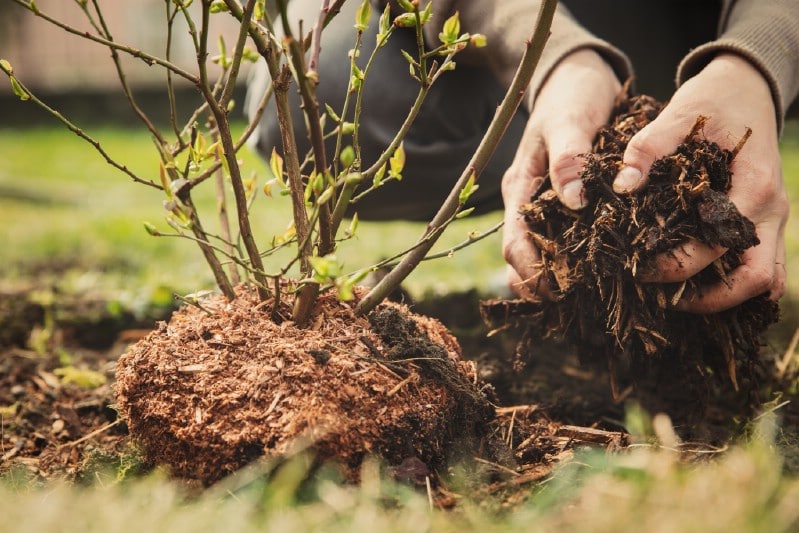

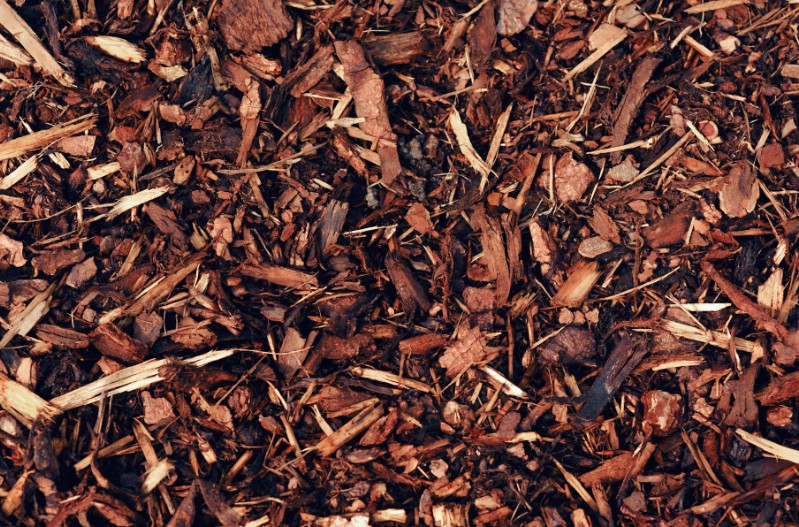
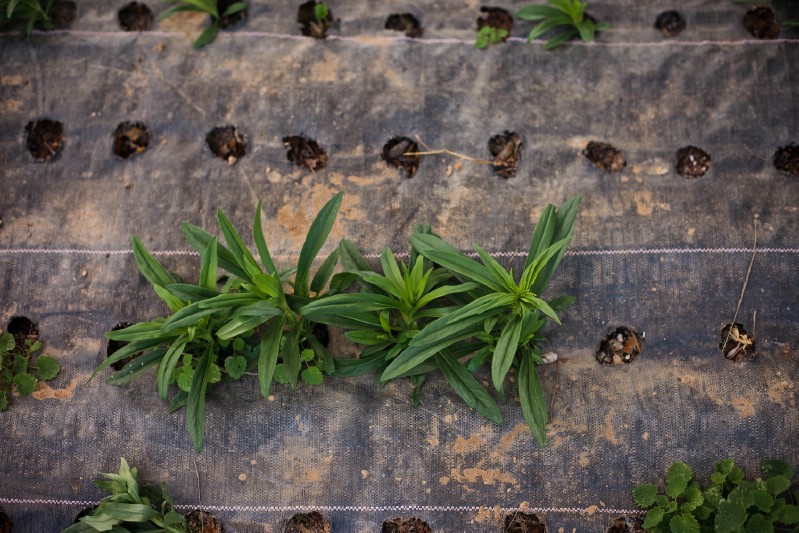
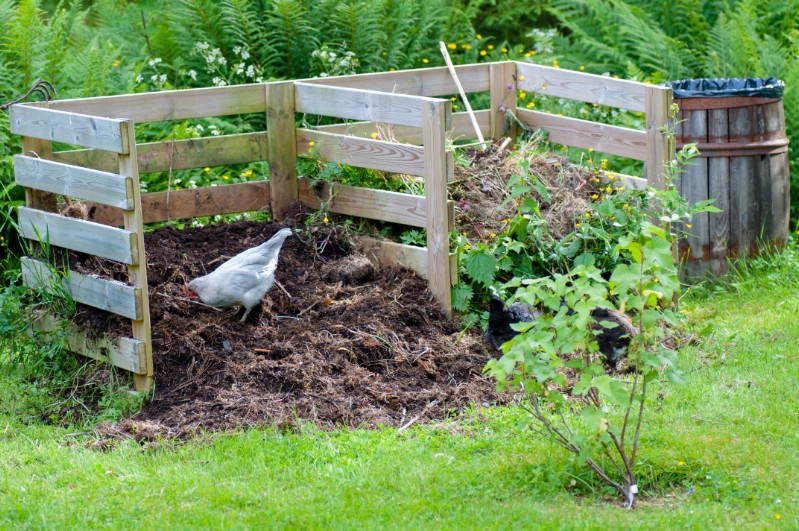




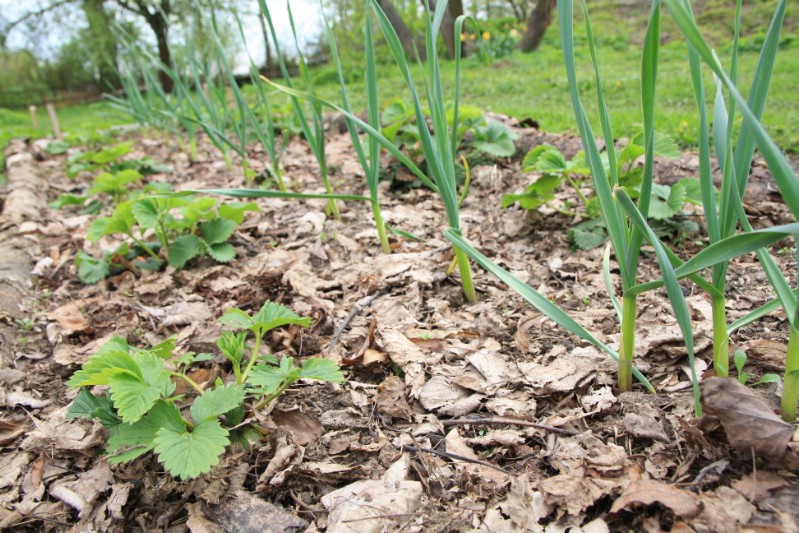
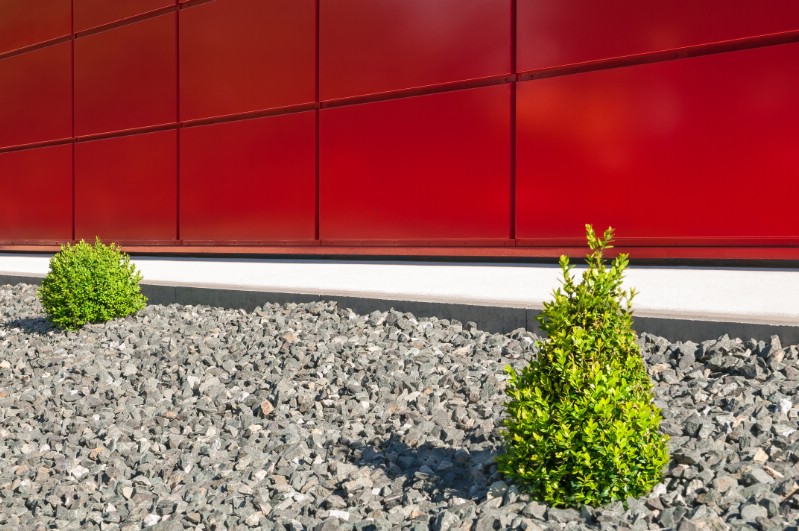







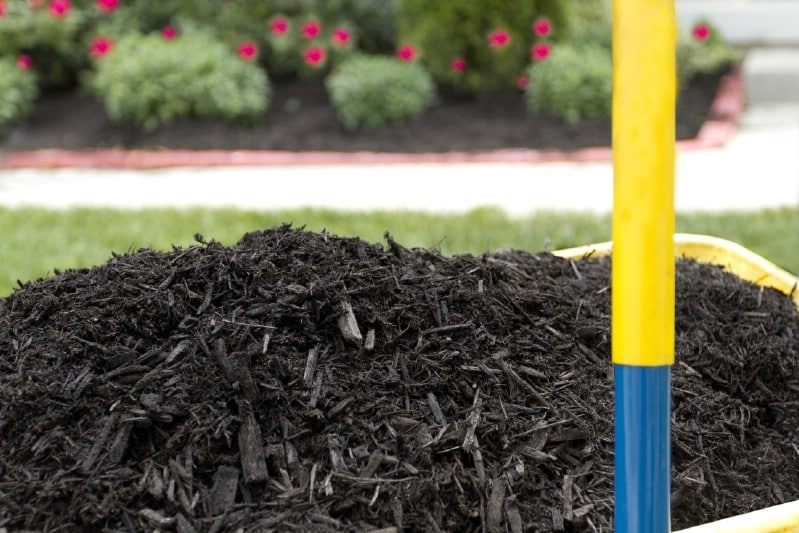








Missi Conover
We live in a super high wind area Do you have any suggestion on how to keep the mulch from blowing away?
Connie Peter
Can I plant potatoes in bales of straw IN A CLAWFOOT BATHTUB. I’m. Not sure if restricted air flow is a problem. Thank you!
brenda b. almeroda
very informative